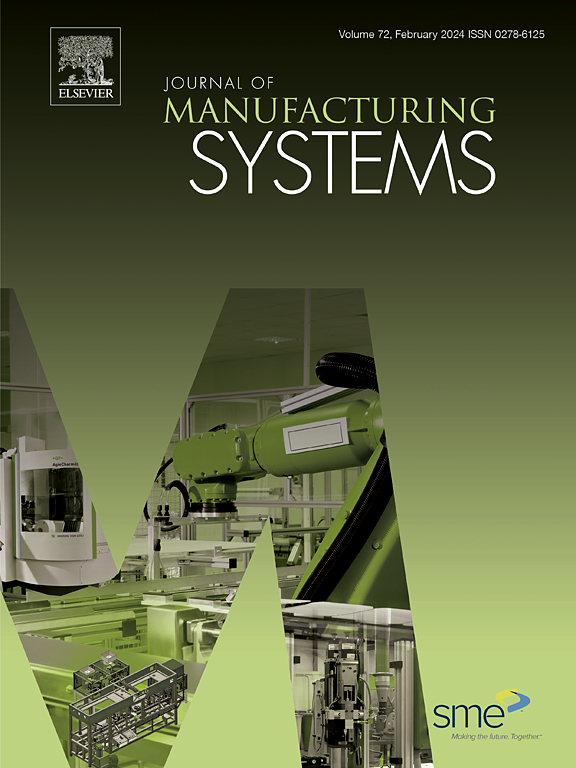Train small, deploy large: Scaling multi-agent reinforcement learning for multi-stage manufacturing lines
IF 14.2
1区 工程技术
Q1 ENGINEERING, INDUSTRIAL
引用次数: 0
Abstract
We present a novel control framework using Multi Agent Reinforcement learning (MARL) that is scalable in the number of workstations in a multi-stage manufacturing line. We show that the dynamics of any production line, regardless of size, can be decoupled into three fundamental expressions. These expressions capture the dynamics of (1) the first workstation, (2) all intermediate workstations, and (3) the last workstation. This decoupling, combined with observation engineering enables training a characteristic 3-workstation, 2-buffer model using MARL methods, which can then generalize to production lines with workstations with arbitrary cycle times, buffer capacities and reliability models. A numerical study is then conducted to validate the framework.
训练小,部署大:扩展多智能体强化学习用于多阶段生产线
我们提出了一种使用多智能体强化学习(MARL)的新型控制框架,该框架可在多阶段生产线的工作站数量上进行扩展。我们表明,任何生产线的动态,无论大小,都可以解耦为三个基本表达式。这些表达式捕获了(1)第一个工作站,(2)所有中间工作站和(3)最后一个工作站的动态。这种解耦与观测工程相结合,可以使用MARL方法训练一个特征的3工作站,2缓冲区模型,然后可以推广到具有任意周期时间,缓冲区容量和可靠性模型的w工作站生产线。然后进行了数值研究来验证该框架。
本文章由计算机程序翻译,如有差异,请以英文原文为准。
求助全文
约1分钟内获得全文
求助全文
来源期刊

Journal of Manufacturing Systems
工程技术-工程:工业
CiteScore
23.30
自引率
13.20%
发文量
216
审稿时长
25 days
期刊介绍:
The Journal of Manufacturing Systems is dedicated to showcasing cutting-edge fundamental and applied research in manufacturing at the systems level. Encompassing products, equipment, people, information, control, and support functions, manufacturing systems play a pivotal role in the economical and competitive development, production, delivery, and total lifecycle of products, meeting market and societal needs.
With a commitment to publishing archival scholarly literature, the journal strives to advance the state of the art in manufacturing systems and foster innovation in crafting efficient, robust, and sustainable manufacturing systems. The focus extends from equipment-level considerations to the broader scope of the extended enterprise. The Journal welcomes research addressing challenges across various scales, including nano, micro, and macro-scale manufacturing, and spanning diverse sectors such as aerospace, automotive, energy, and medical device manufacturing.
 求助内容:
求助内容: 应助结果提醒方式:
应助结果提醒方式:


